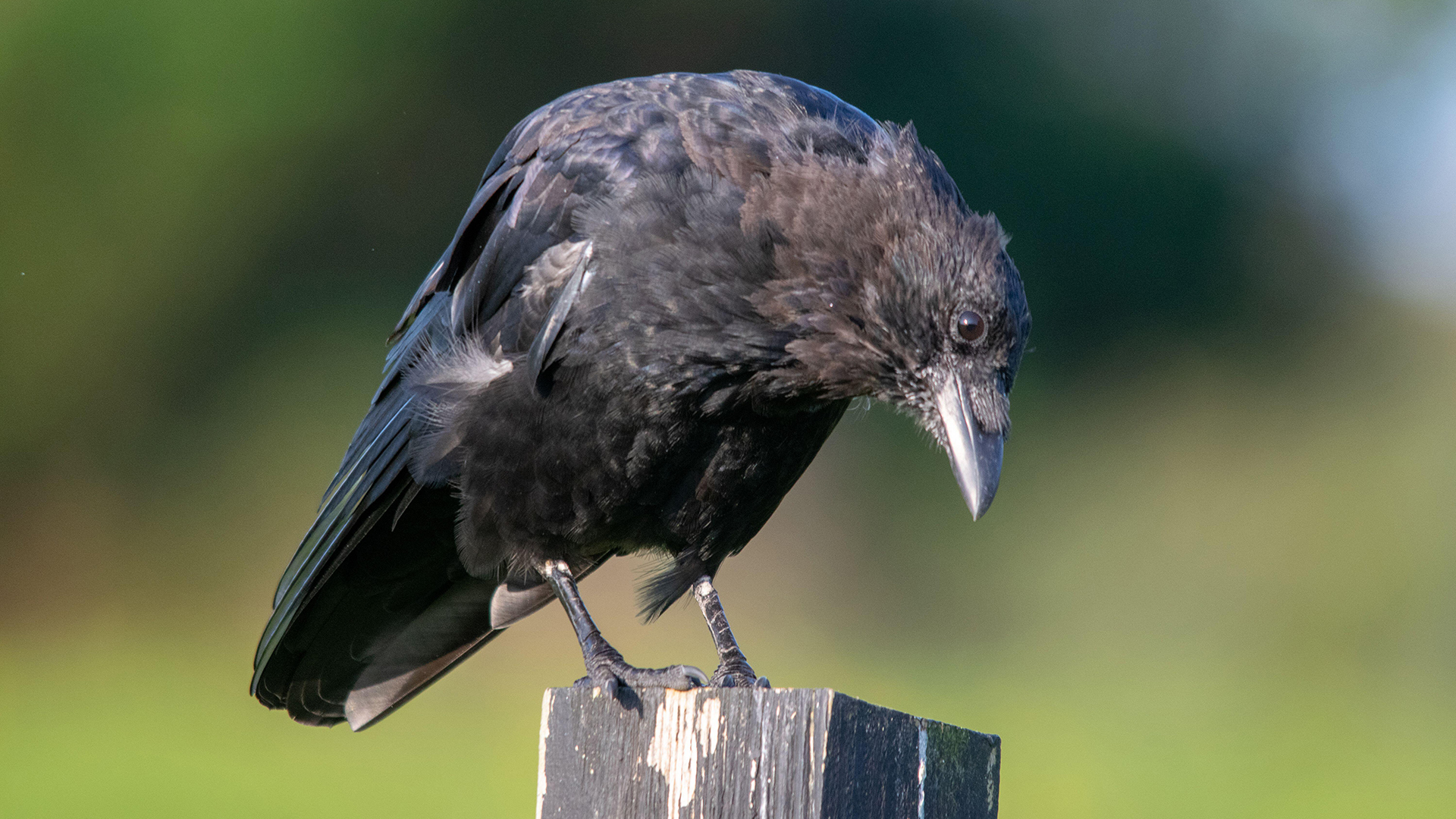Crows outthink monkeys, can grasp recursive patterns
In cognitive tests for recognizing certain types of patterns, crows outperformed monkeys.

Crows are notoriously clever — the songbirds can use tools, understand the concept of zero and follow basic analogies. Now, a new study suggests that their grasp of one complex cognitive principle in particular is better than that of monkeys and comparable to that of small children.
Researchers found that crows can distinguish paired elements buried in larger sequences, a cognitive ability known as recursion. Consider the sentence: "The cat the dog chased meowed." Although the sentence is admittedly a grammatical nightmare, most adults would quickly understand that the cat meowed and that the dog chased the cat. This capacity to pair elements like "cat" to "meow" and "dog" to "chase" in a sentence, or any sequence, was once thought to be a uniquely human trait.
The new study, however, suggests that crows can do it too. And this latest research builds on previous work demonstrating the existence of recursive reasoning among monkeys. "One of the most distinguishing features of human communicative cognition may turn out not to be that human-specific after all," lead author Diana A. Liao, a postdoctoral candidate at the University of Tübingen in Germany, told Live Science in an email.
Grammar isn't the only place where recursion occurs. Our ears can distinguish a musical phrase within a larger piece, and our minds can set aside a mathematical expression embedded between parentheses. Indeed, a 2020 study published in the journal Science Advances demonstrated that people can follow recursive patterns even without a formal background in reading and mathematics. In that study, people from isolated Amazonian tribes identified recursive patterns about as well as adults living in the U.S. did. Nonhuman primates also demonstrated an ability to understand recursion; the same study found that rhesus monkeys (Macaca mulatta) were only slightly inferior to toddlers when it came to distinguishing paired elements, such as opened and closed brackets, from a morass of symbols.
The new study, published Nov. 2 in Science Advances, builds on this work to extend the findings beyond primates. "The study is well-designed and executed, and the results are clear and compelling," said Stephen Ferrigno, an assistant professor in the psychology department at the University of Wisconsin-Madison and lead author on the 2020 paper. Ferrigno was not involved in the new study.
Related: Crows and ravens took over the world because they're spookily smart (and brawny, too)
Liao and her colleagues started off by teaching two crows (Corvus corone) to identify the symbols { }, [ ] and < >, rewarding them with treats only when the birds pecked in the order of a center-embedded recursive sequence, such as { ( ) } or ( { } ). It took the birds about a week to learn to peck the symbols in that order, after which the crows sat for their final exams: strings of similar symbols they had not yet seen, such as { } [ ]. Humans, toddlers and monkeys faced with such a test usually understand that if { ( ) } is correct then { [ ] } or [ { } ] is also correct.
Get the world’s most fascinating discoveries delivered straight to your inbox.
As for the crows, not only did they perform as well as preschoolers typically do on such tests, they also outperformed monkeys. In the 2020 study, adult humans selected a center-embedded structure between 60% and 90% of the time; children did so 43% of the time; and monkeys, 26% of the time. In the new study, crows selected center-embedded structures about 40% of the time.
This result suggests that the ability to identify recursive sequences, often considered a defining feature of language, may have initially evolved for other purposes. "The finding that non-linguistic animals — both monkeys and crows — can represent these complex sequences suggests that this ability may have evolved outside of the language domain," Ferrigno said.
It is also possible that recursive logic is a key component of communication, even for crows. "If corvid songbirds can understand and produce recursive structures, they may also use it for vocal communication and managing their intricate social relationships," Liao said.
Meanwhile, from a neurobiological perspective, the findings open the door to questions about how non-mammalian brains perform cognitive feats once thought to be beyond the scope of animals that lacked a six-layered neocortex. "Our results suggest that certain brain structures, such as the layered cortex of primates, are not necessary to support recursive understanding," Liao said. "Further research on the neural circuits underlying this ability would be fascinating."

Joshua A. Krisch is a freelance science writer. He is particularly interested in biology and biomedical sciences, but he has covered technology, environmental issues, space, mathematics, and health policy, and he is interested in anything that could plausibly be defined as science. Joshua studied biology at Yeshiva University, and later completed graduate work in health sciences at Cornell University and science journalism at New York University.


